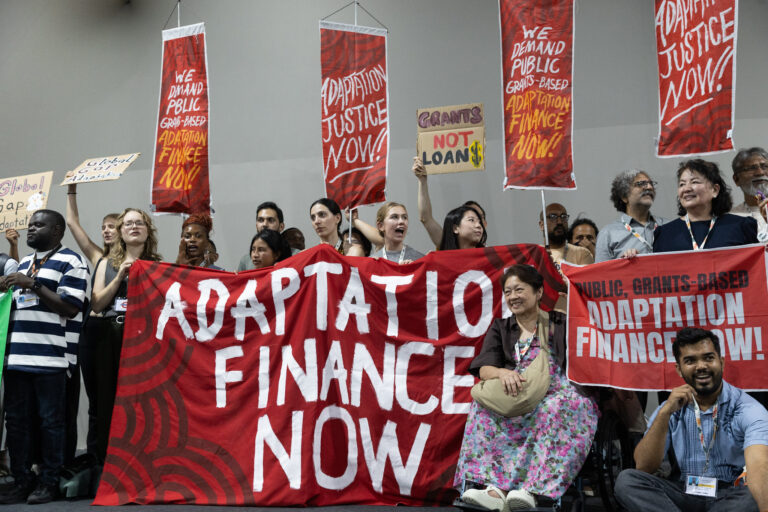- In the past five years, we traversed all landscapes of India, wrote about the country’s rich biodiversity, tracked the impacts of climate change and followed India’s transition to renewable energy.
- While we continue to extensively report on plant and animal species and follow all major environment developments in the country, in 2023 we aim to push the envelope and explore the underreported area of environmental economics.
- With objectivity and science-based evidence at our core, along with the strength of two languages, we aim to dig deep, explore nuances and take environment journalism in India to new heights.
Today, Mongabay-India completes five years in bringing you stories and inspiration from nature’s frontlines in India. We have brought you stories from all the states of the country, including the island groups in the Arabian Sea and the Bay of Bengal.
When we started as a sub-domain to Mongabay.com in January 2018, we were looking for an editorial continuity that would link us to the two-decadal heritage of the global organisation while also being cognisant of the environmental realities of India. Conservation and environment were the core strengths of Mongabay.com. For India, however, there was a need to broaden the scope of our environmental coverage.
Our launch editorial five years ago, articulated the idea of mainstreaming biodiversity thus. “We hope that from our stories, biodiversity-related issues will occupy their rightful place in the public and policy discussions. Our conservation and environment stories will go beyond the limited discussions on protected areas and charismatic species such as the tiger and the elephant and will look at how conservation and sustainable use of natural wealth can strengthen the lives and livelihoods of not just those who live in and around forests but even those living in far-off cities.”

In the past five years, our team members and contributors traversed all landscapes – the mountains, rivers, grasslands, wetlands and mangrove swamps. We wrote stories about plant and animal species (both popular and under-reported). We followed all the major environmental developments and we tracked India’s transition from fossil fuels to renewable energy in these five years.
We also kept track of the indicators of the changing climate in the past five years – flooding, drought, heat waves and cold waves. We reported on scientific research on the Arabian Sea warming above the cyclogenesis point, and on the feint-and-parry of the international negotiations at the conference of parties.

After launching in January 2018, the Mongabay-India English site has more than 2,400 stories and the Mongabay-India Hindi site, after launching in late 2020, has produced nearly 500 stories.
In our quest for expanding into coverage in non-English languages, Hindi emerged as the natural choice, given that there is a huge population of Hindi speakers accessing the internet like never before. Publishing in Hindi opened up an entirely new demographic profile. Using a combination of stories translated from English and Hindi-first stories, Mongabay-Hindi has been building an entirely new discourse on science, environment and policy for the Hindi readership. Mongabay-Hindi has also acted as a vehicle for capacity building for Hindi writers and multimedia content producers, who, in turn, have contributed unique on-ground stories.

While text has remained our mainstay, we have been experimenting with multiple forms of content, including videos (longform and short form), photo essays, illustrations, infographics, static and interactive maps, webinars and training sessions, and podcasts.
Starting 2022, Mongabay-India has been implementing a planned social media strategy that has brought in engagement from new audiences. Further, all stories produced on Mongabay are available for republishing under a Creative Commons licence and have been widely republished in digital and print Indian publications.
Listen: Everything Environment by Mongabay India podcast on Spotify, Apple or on our website
Over the years, we have looked at stories from the intersections of themes, for instance the interplay of gender and environment. These were stories of how women’s groups have come together to protect their forests and natural resources and how climate change and the environment impacts women uniquely. We talked in depth about how the laws enunciated to protect the rights of tribals and indigenous communities were faring in their implementation in different parts of the country. Along with the publication Citizen Matters we explored the urban biodiversity of Bengaluru and looked at the health of urban grasslands and wetlands.
In our effort to highlight the need for conserving some of the neglected habitats, we did a series of stories called Wetland Champions. Scouring the villages, towns and cities of the country, our contributors identified 25 individuals or groups who, through their own agency, had worked hard to protect their local wetlands. Through our coverage we gave strength to the voice of these individuals and their message on conserving the ubiquitous wetlands.

An important element of Mongabay-India’s journalism has been using science and data as evidence in stories. Apart from using academic papers as starting points for stories, Mongabay-India (MI) uses science-based evidence, in most of our stories. Apart from the regular players in an environmental story, we look at the latest scientific developments, talk to scientists who have worked in the area and use data obtained from reliable sources.
Further, MI has been establishing linkages between typically disparate areas of coverage. In the Environment and Elections series, we interlinked two domains that typically get their own stories but were rarely reported together. This created a body of work starting with the state elections of 2018 and leading up to the 2019 national elections. Other media houses mirrored our coverage by republishing and publishing related stories.
In mid-2020, MI became one of the first media houses in the country to cover just transitions – exploring whether India’s transition to clean energy is “just” for the environment and communities. This coverage is now in its third year. MI has also produced on-ground, disaggregated reporting on clean energy. While coverage on mining is well-established in the Indian media, ground reporting on clean energy is as yet taking shape and some of the first few detailed stories have been from MI.

Based on our experience in introducing thematic areas that push the envelope in environmental journalism in the country, MI now aims to explore a new thematic area which has been underreported: environmental economics, which we will archive under the series “Environomy”. We believe that detailed reporting on the economics of decisions involving biodiversity can lead to more informed decision making.
At Mongabay-India, there’s always magic in the air; a feeling that we’re on the brink of something new, something exciting. We hope to have you by our side as we step forward into the next phase in which we plan to scale new frontiers in environment journalism.
Read more: Editor’s review 2022: A warmer Arabian Sea, energy transition and a search for economic value
Banner image: A fisherwoman pulling up her fishing net using the traditional Khu-il Chingba method in front of a homestay in Loktak, Manipur. Photo by Victor Ningthoujam.














